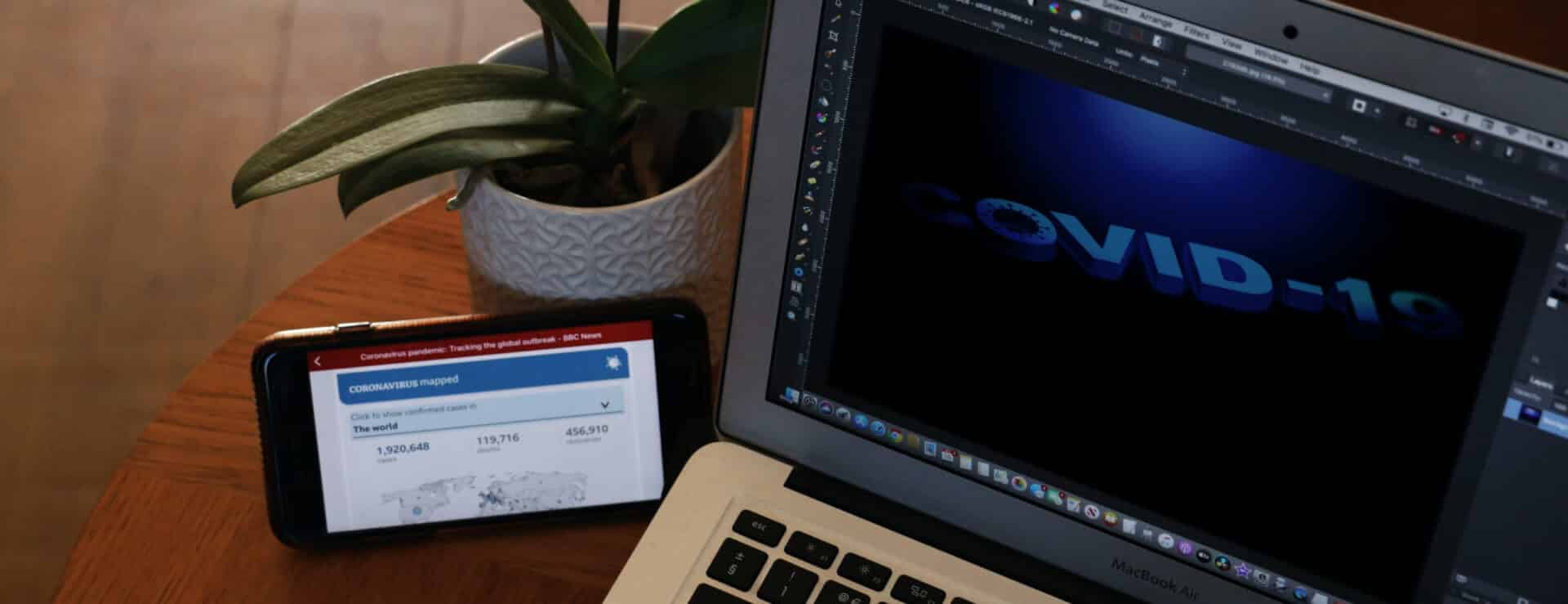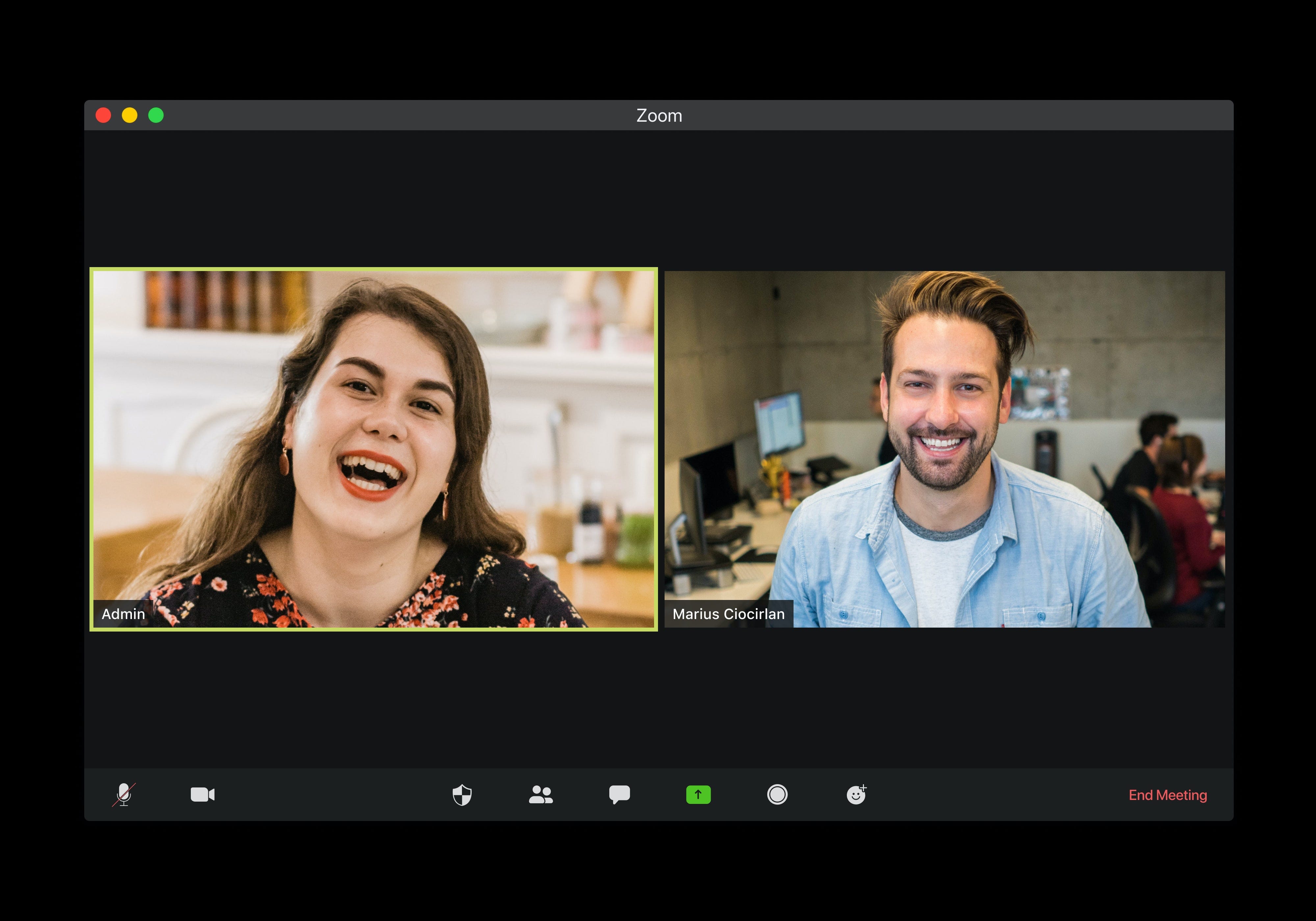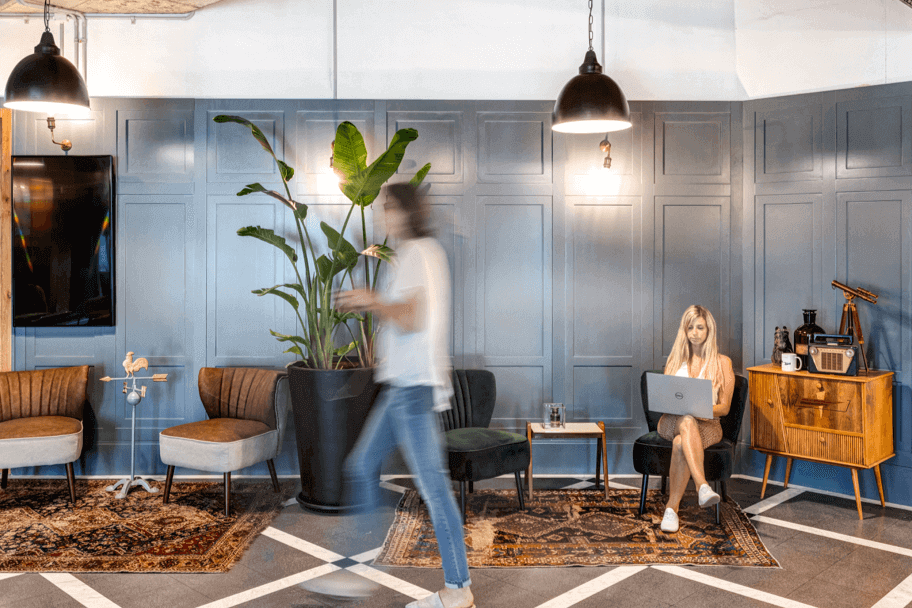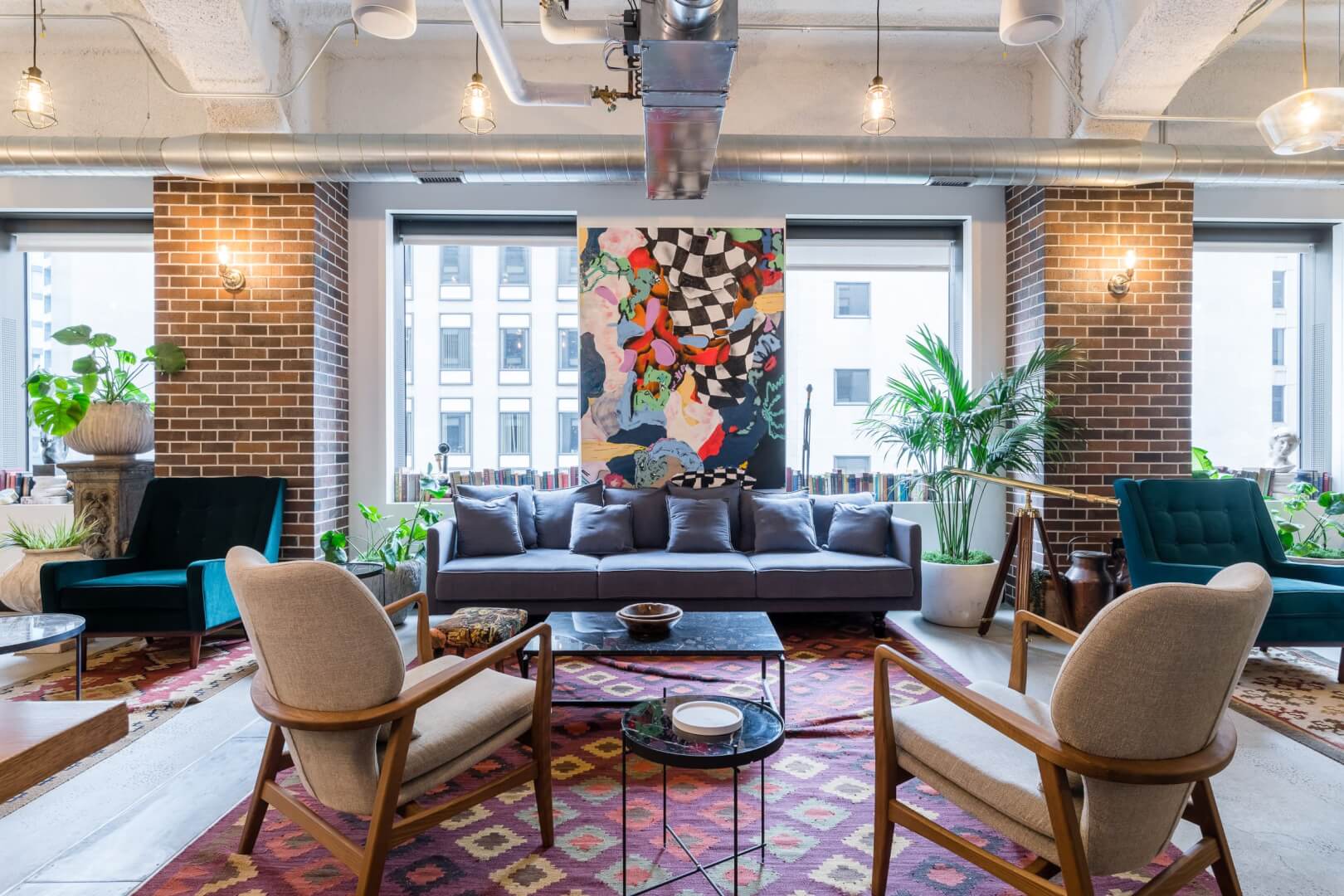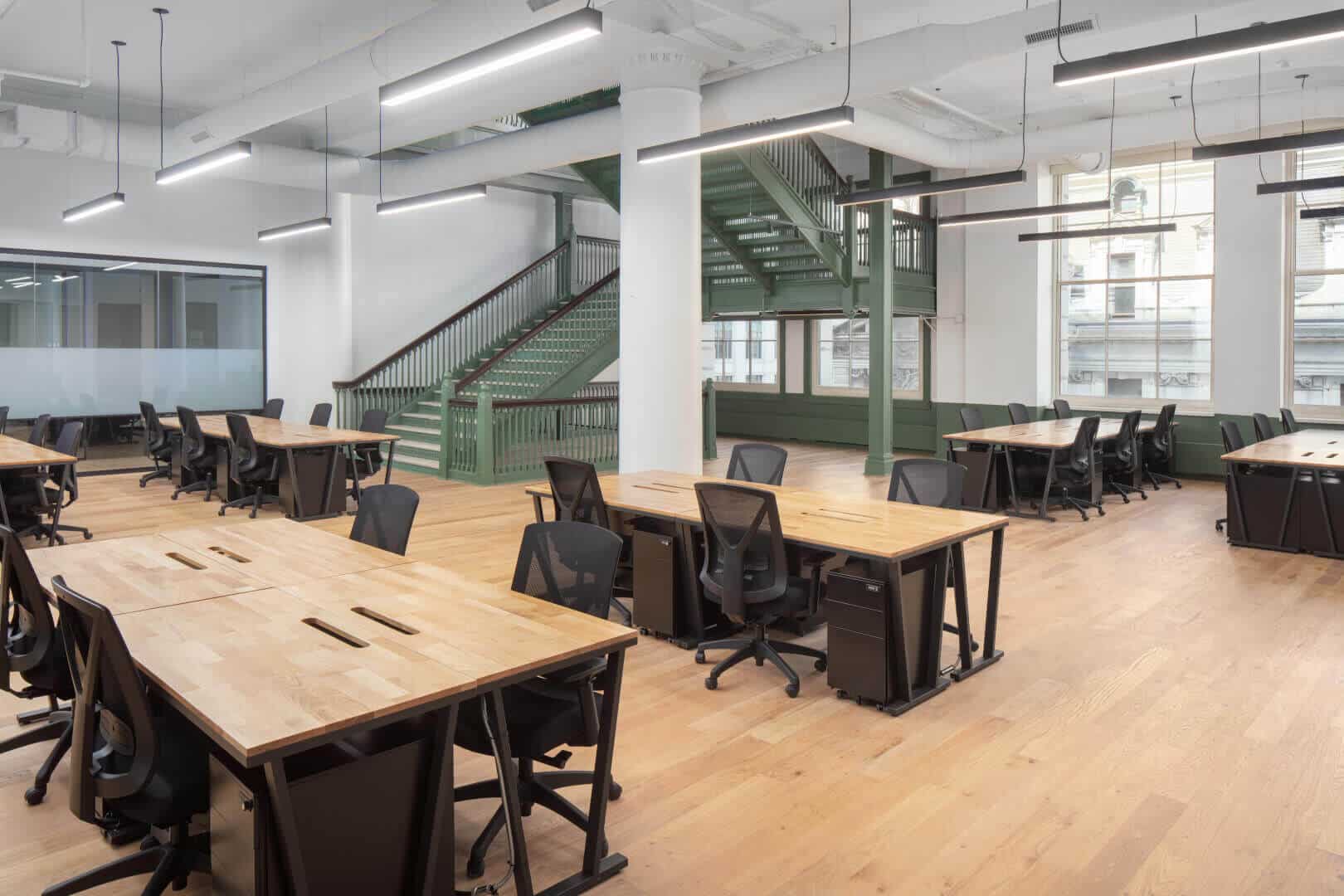[German follows below]
What will the Future Office Spaces be like?
To say that the working world has been turned upside down by the COVID pandemic is, of course, an understatement. Employees are giving fresh thought to what it is they want from work and how they might get it – what would make their working life happier. And, constrained by limitations to travel, opening hours and staff availability, employers are having to re-imagine their workplaces as an office space alternative to traditional workspace, offering more flexibility and agility to function in this new business landscape while also retaining those employees too.
Flexibility is key here. ‘WFH’ has become a commonplace acronym. ‘Remote’ now refers more to working practices than the gadget you change TV channels with. The PC market has this year enjoyed its first big growth in a decade, while laptop sales have been stratospheric. Once marginal conferencing software the likes of Zoom has gone mainstream. Commuter routes have grown quiet.
But what started out as a necessity for employers has become a preference for ‘white collar’ employees, with more time at home allowing many to better fit work in their personal life, be that hobbies or family responsibilities. A 2021 study by Prudential has shown that 42% of workers now wouldn’t want to work for an employer that wanted them on site all the time, with 87% wanting to work remotely at least one day a week, highlighting the importance and the benefits of office location neutrality. Why? It makes for a happier life. Office location neutrality provides employees with the flexibility to work from various locations, including their homes, coworking spaces, or other remote setups. This freedom allows them to create a work-life balance that suits their individual needs and preferences, leading to increased job satisfaction and overall well-being.
In fact, our own Employee Happiness Survey of 5000 employees internationally in 2019 already showed that flexible working is crucial to the 70% of respondents who consider themselves happy in their working lives. Small wonder that, according to a McKinsey report, flexible work solutions like hot desking were even growing at 25% per annum before the pandemic… Providing the flexibility and connectivity demanded by modern professionals, it is clear why satellite offices are the next big thing for tech.
What is the hot desking concept, you ask? It is a flexible workspace arrangement where individuals can use any available desk or workspace within a shared office environment like our Miami coworking space, rather than having assigned seating. This concept further enhances flexibility and collaboration, allowing professionals to work in different areas and interact with diverse teams.
So the coming years can expect to see a break with the idea of traditional working hours as employees – aided perhaps by productivity monitoring and mentoring software – have more autonomy to just get the job done to their deadlines as they see fit. It’s less ‘people to work’ and more ‘work to people’.
Various studies suggest that ‘remote working’ will foster a new dynamic in productivity and decision making driven by small, self-organised teams free to act independently in pursuit of their dedicated project goals. It’s no surprise that many major employers have been looking to offload the expense of large, company-owned workspaces.
But that is only part of the picture. To retain employees, or bring on new ones, employers will also need to be mindful of two key factors – one, that not everybody, especially younger professionals, has a home set-up that allows for a positive working environment, either in terms of space or being free from disruption. Having the option to go somewhere away from the home to work may prove critical to these employees’ function.
Secondly, lockdown has been a reminder for many of what they like about work – the structure of routine, a place to go that isn’t home (because not everybody’s home life is idyllic) and real life human interaction. Our survey has shown that a collaborative working environment that allows such interaction is a reason for 75% of those surveyed to feel happier at work.
Work spaces have always had their trends – from cubicles to open plan offices (which you can also find in our Shoreditch office space) and back again, via ‘break-out’ spaces. But the profound experiment in working practices afforded by the pandemic – or, rather, forced by it – means that flexibility for many types of work will in the future likely entail both virtual and physical workspaces. Google is just one such company now switching to a model of multiple multi-purpose offices.
Certainly reports of the death of the office have been exaggerated – it’s just that now it needs to offer a variety of options to suit a variety of needs, be they more closed off, suiting the need for quiet and focus, or the kind of more relaxed, freeform environment suited to debating plans, for working solo or with colleagues.
Employee productivity used to be founded on the idea that all employees had to be under the same roof at the same time. Now – with McKinsey suggesting that 69% of employees reckon they’re either as or more productive working remotely – it’s de-centralisation of work, and the spaces in which it is done, that will in large part shape employee satisfaction and, by turns, that productivity.
Der Workspace von morgen
Die Corona-Krise macht es uns deutlicher denn je: Unsere Arbeitswelt funktioniert nicht mehr so, wie sie derzeit ist. Sie muss flexibler und agiler werden, um auch weiterhin Arbeitnehmer zufrieden zu stellen und ihnen ein gutes Arbeitsumfeld zu bieten. Unterstützen kann dabei nicht nur die Digitalisierung, auch Unternehmen müssen ganz neue Arbeitsbedingungen für Mitarbeiter schaffen, um sie langfristig an sich zu binden.
Digitale Entwicklungen machen zwar eine neue Art zu arbeiten möglich — doch es ist gerade die neue Generation von Arbeitnehmern, die diese auch wirklich aktiv einfordert. Die 20- bis 30-Jährigen sind mit technischen Errungenschaften aufgewachsen und erwarten diese auch an ihrem Arbeitsplatz. Dazu gehört, mit dem Laptop entspannt von zu Hause aus zu arbeiten und Meetings nicht mehr zwingend persönlich abzuhalten, sondern als Videokonferenz. Studien zeigen, dass Arbeitgeber sich anpassen müssen, sonst wird die Suche nach neuen Mitarbeitern schwer.
Studie zeigt: Flexibles Arbeiten wird immer wichtiger
Der 2019 unter 5.000 Arbeitnehmern von Mindspace durchgeführte „Employee Happiness Survey” verdeutlicht, auf was es ankommt: 70 Prozent der Befragten, die sich selbst als glückliche Arbeitnehmer einschätzen, haben die Möglichkeit, flexibel zu arbeiten. Feste Arbeitszeiten aufbrechen, um eine bessere Balance zwischen Arbeit und Privatleben zu erreichen, wird dabei immer mehr an Bedeutung gewinnen. Statt ausschließlich um das eigene Arbeitsleben herum zu organisieren, wird dieses verstärkt in das Privatleben eingebaut. Anstatt den Feierabend zu eliminieren geht es darum jederzeit arbeiten zu können, anstatt nur zu starren Regelarbeitszeiten. Am Nachmittag eine zweistündige Pause einlegen, um den neuen Sportkurs zu besuchen oder die Kinder von der Schule abzuholen — und die Arbeit als Ausgleich am Abend erledigen. Der klassische 9 to 5 Job wird hinfällig. Darüber hinaus bleibt das Gemeinschaftsgefühl weiterhin von Bedeutung, auch wenn Großraumbüros der 60er Jahre längst der Vergangenheit angehören. Eine kollaborative Arbeitsumgebung, die Interaktion ermöglicht, ist für 75 Prozent der Befragten ein Grund dafür, sich bei der Arbeit wirklich glücklicher zu fühlen. Dennoch zeichnen sich auch hier Veränderungen ab. Arbeitnehmer wollen vor allem eine flexible Arbeitskultur, in der sie sich mit Kollegen austauschen können, wenn sie wollen, die es aber auch zulässt, eigenständig und unabhängig zu arbeiten.
Flexibilität, Selbstbestimmung und Atmosphäre
Aber wie können diese Erkenntnisse genutzt werden, um die Mitarbeiterzufriedenheit zu steigern? Es geht vor allem darum, sich bewusst zu machen, dass derartige Wünsche sowohl mit bestimmten Arbeitsweisen als auch mit der Arbeitsumgebung verbunden sind. Vereinfacht bedeutet dabei Agilität, dass in kleinen, selbstorganisierten Teams gearbeitet wird und Entscheidungen eigenständiger getroffen werden. Diese dezentrale Form der Beschäftigung bietet die Grundlage für einen flexiblen Arbeitsplatz. Räumlichkeiten, die Platz für gemeinschaftliche Aktivitäten wie Kochen oder Meetings in entspannter Atmosphäre bieten, können eine gute Lösung sein. Sie bringen Menschen zusammen und brechen die traditionelle Art und Weise, wie bisher gearbeitet wurde, auf. In diesem Zusammenhang bietet sich das Coworking-Konzept an, bei dem Mitarbeiter nutzen, was sie gerade benötigen: abgeschirmte Meetingräume, reguläre Schreibtische oder geteilte Räumlichkeiten. Arbeiten wie in den eigenen vier Wänden — denn die richtige Atmosphäre ist gerade jungen Fachkräften am Markt besonders wichtig.
Die neue Art zu Arbeiten
Die Be wegungen im Zuge von „New Work“ zeigen: klassische Arbeitsstrukturen wandeln sich und werden von neuen Formen abgelöst, die wiederum nach einer angepassten Arbeitsumgebung verlangen. Flexible Vorstellungen sind der Mittelpunkt des neuen Arbeitszeitalters — sowohl räumlich als auch organisatorisch. Denn schon vor der Corona-Krise hat sich unser klassischer Arbeitsplatz verändert, die Krise hat lediglich dazu beigetragen, dass diese Veränderung nun noch stärker beschleunigt wird. Daher sollten Unternehmen jetzt dafür sorgen, ihren Mitarbeitern das passende und flexible Arbeitsumfeld zu bieten, dass sie sich wünschen.

